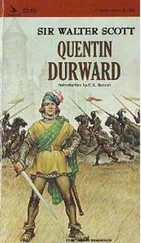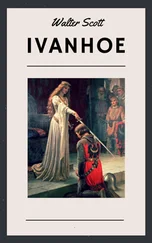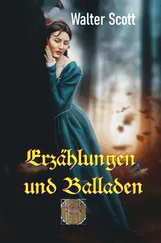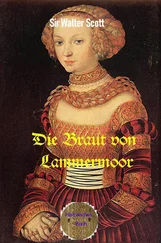Walter Scott - Letters on Demonology and Witchcraft
Здесь есть возможность читать онлайн «Walter Scott - Letters on Demonology and Witchcraft» весь текст электронной книги совершенно бесплатно (целиком полную версию без сокращений). В некоторых случаях можно слушать аудио, скачать через торрент в формате fb2 и присутствует краткое содержание. Жанр: История, на английском языке. Описание произведения, (предисловие) а так же отзывы посетителей доступны на портале библиотеки ЛибКат.
- Название:Letters on Demonology and Witchcraft
- Автор:
- Жанр:
- Год:неизвестен
- ISBN:нет данных
- Рейтинг книги:4 / 5. Голосов: 1
-
Избранное:Добавить в избранное
- Отзывы:
-
Ваша оценка:
- 80
- 1
- 2
- 3
- 4
- 5
Letters on Demonology and Witchcraft: краткое содержание, описание и аннотация
Предлагаем к чтению аннотацию, описание, краткое содержание или предисловие (зависит от того, что написал сам автор книги «Letters on Demonology and Witchcraft»). Если вы не нашли необходимую информацию о книге — напишите в комментариях, мы постараемся отыскать её.
Letters on Demonology and Witchcraft — читать онлайн бесплатно полную книгу (весь текст) целиком
Ниже представлен текст книги, разбитый по страницам. Система сохранения места последней прочитанной страницы, позволяет с удобством читать онлайн бесплатно книгу «Letters on Demonology and Witchcraft», без необходимости каждый раз заново искать на чём Вы остановились. Поставьте закладку, и сможете в любой момент перейти на страницу, на которой закончили чтение.
Интервал:
Закладка:
The process seems to have consisted in confronting the children with the witches, and hearing the extraordinary story which the former insisted upon maintaining. The children, to the number of three hundred, were found more or less perfect in a tale as full of impossible absurdities as ever was told around a nursery fire. Their confession ran thus:—
They were taught by the witches to go to a cross way, and with certain ceremonies to invoke the devil by the name of Antecessor, begging him to carry them off to Blockula, meaning, perhaps, the Brockenberg, in the Hartz forest, a mountain infamous for being the common scene of witches' meetings, and to which Goethe represents the spirit Mephistopheles as conducting his pupil Faustus. The devil courteously appeared at the call of the children in various forms, but chiefly as a mad Merry-Andrew, with a grey coat, red and blue stockings, a red beard, a high-crowned hat, with linen of various colours wrapt round it, and garters of peculiar length. He set each child on some beast of his providing, and anointed them with a certain unguent composed of the scrapings of altars and the filings of church clocks. There is here a discrepancy of evidence which in another court would have cast the whole. Most of the children considered their journey to be corporeal and actual. Some supposed, however, that their strength or spirit only travelled with the fiend, and that their body remained behind. Very few adopted this last hypothesis, though the parents unanimously bore witness that the bodies of the children remained in bed, and could not be awakened out of a deep sleep, though they shook them for the purpose of awakening them. So strong was, nevertheless, the belief of nurses and mothers in their actual transportation, that a sensible clergyman, mentioned in the preface, who had resolved he would watch his son the whole night and see what hag or fiend would take him from his arms, had the utmost difficulty, notwithstanding, in convincing his mother that the child had not been transported to Blockula during the very night he held him in his embrace.
The learned translator candidly allows, "out of so great a multitude as were accused, condemned, and executed, there might be some who suffered unjustly, and owed their death more to the malice of their enemies than to their skill in the black art, I will readily admit. Nor will I deny," he continues, "but that when the news of these transactions and accounts, how the children bewitched fel into fits and strange unusual postures, spread abroad in the kingdom, some fearful and credulous people, if they saw their children any way disordered, might think they were bewitched or ready to be carried away by imps." [53] [53] Translator's preface to Horneck's "Account of what happened in the Kingdom of Sweden." See appendix to Glanville's work.
The learned gentleman here stops short in a train of reasoning, which, followed out, would have deprived the world of the benefit of his translation. For if it was possible that some of these unfortunate persons fell a sacrifice to the malice of their neighbours or the prejudices of witnesses, as he seems ready to grant, is it not more reasonable to believe that the whole of the accused were convicted on similar grounds, than to allow, as truth, the slightest part of the gross and vulgar impossibilities upon which alone their execution can be justified?
The Blockula, which was the object of their journey, was a house having a fine gate painted with divers colours, with a paddock, in which they turned the beasts to graze which had brought them to such scenes of revelry. If human beings had been employed they were left slumbering against the wall of the house. The plan of the devil's palace consisted of one large banqueting apartment and several withdrawing-rooms. Their food was homely enough, being broth made of coleworts and bacon, with bread and butter, and milk and cheese. The same acts of wickedness and profligacy were committed at Blockula which are usually supposed to take place upon the devil's Sabbath elsewhere; but there was this particular, that the witches had sons and daughters by the fiends, who were married together, and produced an offspring of toads and serpents.
These confessions being delivered before the accused witches, they at first stoutly denied them. At last some of them burst into tears, and acquiesced in the horrors imputed to them. They said the practice of carrying off children had been enlarged very lately (which shows the whole rumours to have arisen recently); and the despairing wretches confirmed what the children said, with many other extravagant circumstances, as the mode of elongating a goat's back by means of a spit, on which we care not to be particular. It is worth mentioning that the devil, desirous of enjoying his own reputation among his subjects, pretended at one time to be dead, and was much lamented at Blockula—but he soon revived again.
Some attempts these witches had made to harm individuals on middle earth, but with little success. One old sorceress, indeed, attempted to strike a nail, given her by the devil for that purpose, into the head of the minister of Elfland; but as the skull was of unusual solidity, the reverend gentleman only felt a headache from her efforts. They could not be persuaded to exhibit any of their tricks before the Commissioners, excusing themselves by alleging that their witchcraft had left them, and that the devil had amused them with the vision of a burning pit, having a hand thrust out of it.
The total number who lost their lives on this singular occasion was fourscore and four persons, including fifteen children; and at this expense of blood was extinguished a flame that arose as suddenly, burned as fiercely, and decayed as rapidly, as any portent of the kind within the annals of superstition. The Commissioners returned to Court with the high approbation of all concerned; prayers were ordered through the churches weekly, that Heaven would be pleased to restrain the powers of the devil, and deliver the poor creatures who hitherto had groaned under it, as well as the innocent children, who were carried off by hundreds at once.
If we could ever learn the true explanation of this story, we should probably find that the cry was led by some clever mischievous boy, who wished to apologise to his parents for lying an hour longer in the morning by alleging he had been at Blockula on the preceding night; and that the desire to be as much distinguished as their comrade had stimulated the bolder and more acute of his companions to the like falsehoods; whilst those of weaker minds assented, either from fear of punishment or the force of dreaming over at night the horrors which were dinned into their ears all day. Those who were ingenuous, as it was termed, in their confessions, received praise and encouragement; and those who denied or were silent, and, as it was considered, impenitent, were sure to bear the harder share of the punishment which was addressed to all. It is worth while also to observe, that the smarter children began to improve their evidence and add touches to the general picture of Blockula. "Some of the children talked much of a white angel, which used to forbid them what the devil bid them do, and told them that these doings should not last long. And (they added) this better being would place himself sometimes at the door betwixt the witches and the children, and when they came to Blockula he pulled the children back, but the witches went in."
This additional evidence speaks for itself, and shows the whole tale to be the fiction of the children's imagination, which some of them wished to improve upon. The reader may consult "An Account of what happened in the Kingdom of Sweden in the years 1669 and 1670, and afterwards translated out of High Dutch into English by Dr. Antony Horneck," attached to Glanville's "Sadducismus Triumphatus." The translator refers to the evidence of Baron Sparr, Ambassador from the Court of Sweden to the Court of England in 1672; and that of Baron Lyonberg, Envoy Extraordinary of the same power, both of whom attest the confession and execution of the witches. The King of Sweden himself answered the express inquiries of the Duke of Holstein with marked reserve. "His judges and commissioners," he said, "had caused divers men, women, and children, to be burnt and executed on such pregnant evidence as was brought before them. But whether the actions confessed and proved against them were real, or only the effects of strong imagination, he was not as yet able to determine"—a sufficient reason, perhaps, why punishment should have been at least deferred by the interposition of the royal authority.
Читать дальшеИнтервал:
Закладка:
Похожие книги на «Letters on Demonology and Witchcraft»
Представляем Вашему вниманию похожие книги на «Letters on Demonology and Witchcraft» списком для выбора. Мы отобрали схожую по названию и смыслу литературу в надежде предоставить читателям больше вариантов отыскать новые, интересные, ещё непрочитанные произведения.
Обсуждение, отзывы о книге «Letters on Demonology and Witchcraft» и просто собственные мнения читателей. Оставьте ваши комментарии, напишите, что Вы думаете о произведении, его смысле или главных героях. Укажите что конкретно понравилось, а что нет, и почему Вы так считаете.









